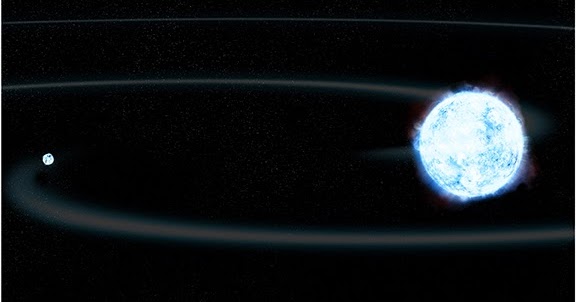Exactly!Magikarpmaster629 wrote:Ehh, here goes
A. Different evolutionary tracks?
B. A, D, C, B
C. ~50,118 K
Your turn

Exactly!Magikarpmaster629 wrote:Ehh, here goes
A. Different evolutionary tracks?
B. A, D, C, B
C. ~50,118 K

B. and C. were easy, but A definitely needs an explanation. I'm guessing each of the different evolutionary tracks had some variable different- was this variable radius? And why would its gravitational field strength go up as temperature goes down?Adi1008 wrote:Exactly!Magikarpmaster629 wrote:Ehh, here goes
A. Different evolutionary tracks?
B. A, D, C, B
C. ~50,118 K
Your turn

I wrote some stuff in response to Unome in the general Astronomy thread; it'll provide additional information too.Magikarpmaster629 wrote:B. and C. were easy, but A definitely needs an explanation. I'm guessing each of the different evolutionary tracks had some variable different- was this variable radius?Adi1008 wrote:Exactly!Magikarpmaster629 wrote:Ehh, here goes
A. Different evolutionary tracks?
B. A, D, C, B
C. ~50,118 K
Your turn
I might be misunderstanding you, but the y axis is inverted. Larger numbers for log(g) are at the bottom, and are when the temperature is higher. The surface gravity increases as the temperature increases, not the other way aroundMagikarpmaster629 wrote:And why would its gravitational field strength go up as temperature goes down?



Magikarpmaster629 wrote:Sorry this took so long!
1. Which DSOs does this image depict (note the size difference of the two objects)?
2. These DSOs are progenitors of what type of binary star system?
3. These DSOs are potentially progenitors of what two types of explosions? Briefly describe each explosion type.
1. J075141 and J174140. 2. AM CVn binary system. 3. Type Ia Supernovae - the heavier white dwarf accretes enough mass to surpass the Chandrasekhar limit of 1.4 solar masses, accumulating enough pressure and exploding. .Ia supernovae - the explosion occurs only on the surface of the star, leaving it simply damaged. The explosion is 1/10 the brightness of a Type Ia supernovae.

A .Ia supernova isn't necessarily 1/10th the brightness, only a 'fraction' of the brightness. Also, the explosions are thermonuclear driven, not simply pressure driven. Otherwise correct.bhavjain wrote:Magikarpmaster629 wrote:Sorry this took so long!
1. Which DSOs does this image depict (note the size difference of the two objects)?
2. These DSOs are progenitors of what type of binary star system?
3. These DSOs are potentially progenitors of what two types of explosions? Briefly describe each explosion type.1. J075141 and J174140. 2. AM CVn binary system. 3. Type Ia Supernovae - the heavier white dwarf accretes enough mass to surpass the Chandrasekhar limit of 1.4 solar masses, accumulating enough pressure and exploding. .Ia supernovae - the explosion occurs only on the surface of the star, leaving it simply damaged. The explosion is 1/10 the brightness of a Type Ia supernovae.


Pretty sure the triple-alpha process is 3 helium atoms forming a carbon atom. Iron fusion has a negative energy yield, so the star basically starts losing it's energy (or something like that, idk).

Adding on:Unome wrote:Pretty sure the triple-alpha process is 3 helium atoms forming a carbon atom. Iron fusion has a negative energy yield, so the star basically starts losing it's energy (or something like that, idk).
i think the helium atoms are specifically alpha particles (2 neutrons) and iron fusion absorbs energy --> temperature drop(?)
——————————————— SCIDUCK uses CONFUSION! ———————————————

Correct. Also, the alpha process converts helium into heavier elements, a process seen in heavy main sequence stars.sciduck wrote:Adding on:Unome wrote:Pretty sure the triple-alpha process is 3 helium atoms forming a carbon atom. Iron fusion has a negative energy yield, so the star basically starts losing it's energy (or something like that, idk).i think the helium atoms are specifically alpha particles (2 neutrons) and iron fusion absorbs energy --> temperature drop(?)
Users browsing this forum: No registered users and 4 guests